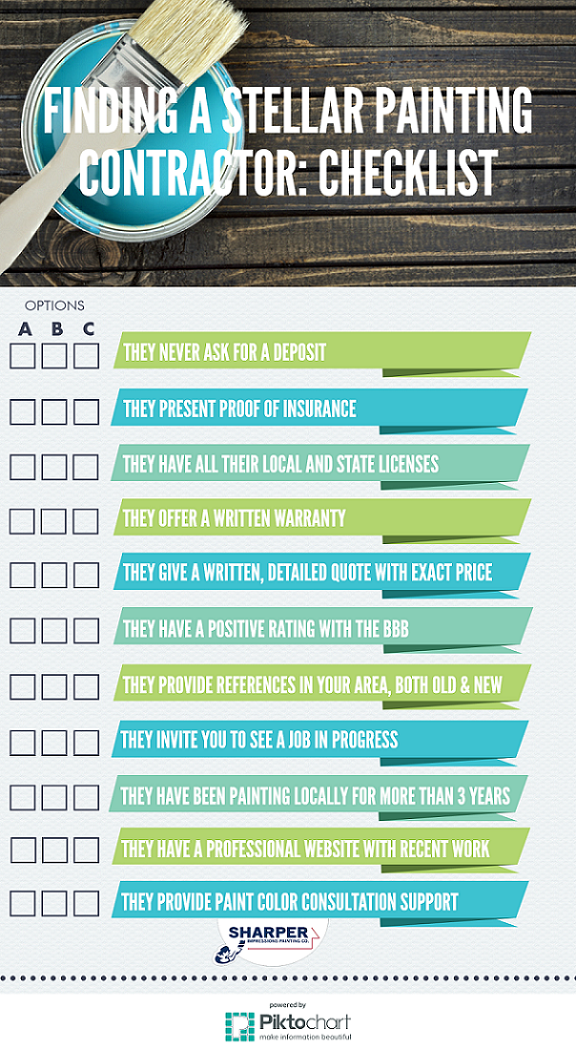Seasonal Considerations For Industrial Outside Painting: What You Required To Know
Seasonal Considerations For Industrial Outside Painting: What You Required To Know
Blog Article
Article Composed By-Ford Celik
When you're intending an industrial outside painting job, seasonal factors can make or break your results. You'll wish to take into consideration just how temperature and humidity impact paint application and drying out times. Selecting the right season can guarantee your paint adheres appropriately and lasts longer. Yet which periods are truly the very best for this kind of work? Allow's discover the crucial elements that can influence your task's success.
The Impact of Temperature on Paint Application
When you're planning a business outside painting project, the temperature can dramatically impact just how well the paint adheres and dries.
Preferably, you wish to repaint when temperatures range between 50 ° F and 85 ° F. If it's as well cold, the paint may not cure effectively, causing concerns like peeling or fracturing.
On the flip side, if it's too hot, the paint can dry also promptly, stopping correct adhesion and causing an uneven surface.
You need to also think about the time of day; morning or late afternoon uses cooler temperatures, which can be a lot more positive.
Constantly inspect the maker's suggestions for the particular paint you're making use of, as they often give advice on the perfect temperature level range for optimum results.
Humidity and Its Effect on Drying Times
Temperature level isn't the only ecological aspect that influences your business outside painting task; moisture plays a significant role too. High humidity levels can decrease drying out times significantly, influencing the total top quality of your paint task.
When the air is saturated with dampness, the paint takes longer to heal, which can result in concerns like poor adhesion and a greater danger of mildew development. If you're repainting on a specifically moist day, be prepared for prolonged delay times in between coats.
It's critical to monitor regional weather and strategy accordingly. Ideally, go for humidity degrees in between 40% and 70% for optimum drying.
Keeping these factors in mind guarantees your job remains on track and supplies a long lasting surface.
Best Seasons for Commercial Exterior Paint Projects
What's the very best time of year for your commercial outside painting tasks?
Springtime and early autumn are normally your best options. During these seasons, temperature levels are light, and humidity levels are often lower, producing perfect problems for paint application and drying out.
Prevent summer season's intense heat, which can trigger paint to completely dry as well swiftly, bring about poor adhesion and surface. In a similar way, winter season's cool temperature levels can hinder appropriate drying and treating, taking the chance of the longevity of your paint work.
Aim for days with temperature levels in between 50 ° F and 85 ° F for optimum outcomes. Remember to check Click In this article for rainfall, as wet conditions can destroy your job.
https://garagepaintersnearme78776.atualblog.com/41358429/the-upcoming-era-of-painting-is-readied-to-embrace-sustainability-and-advancement-but-will-certainly-the-old-time-strategies-of-typical-craftsmanship-continue-to-thrive-in-this-brand-new-context around these aspects guarantees your painting task runs smoothly and lasts much longer.
Final thought
Finally, planning your commercial external paint projects around seasonal factors to consider can make a substantial difference in the outcome. By organizing work throughout the optimal temperatures and humidity levels, you'll ensure much better bond and drying times. Keep in related internet page to watch on neighborhood weather prediction and select the right time of year-- spring and early autumn are your best options. Taking these actions will help you attain a resilient and expert coating that lasts.
